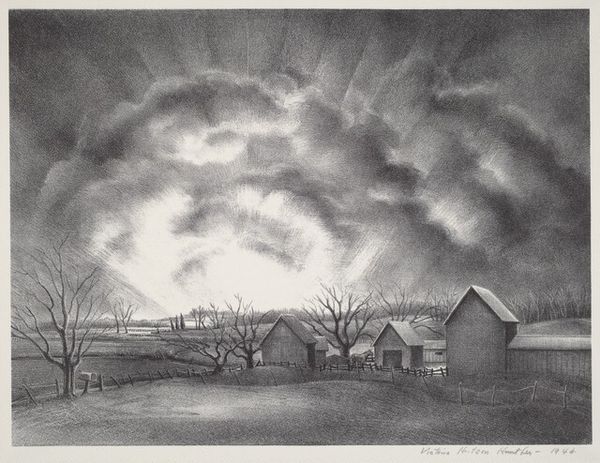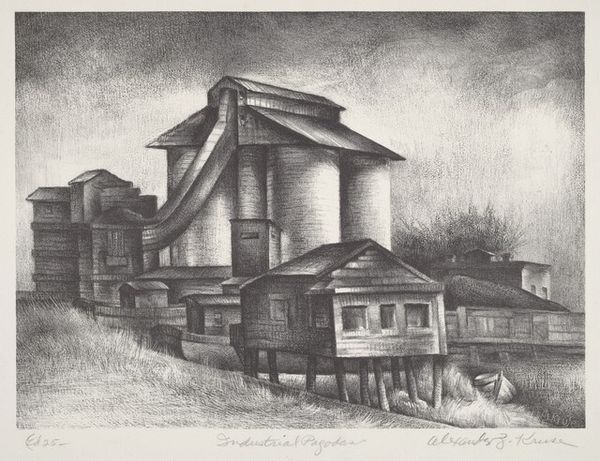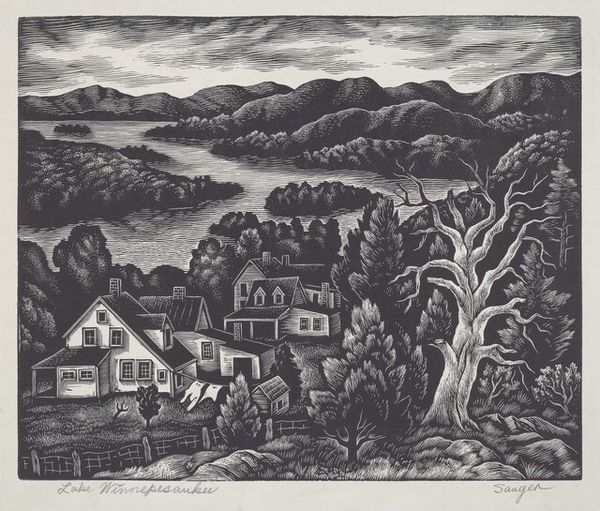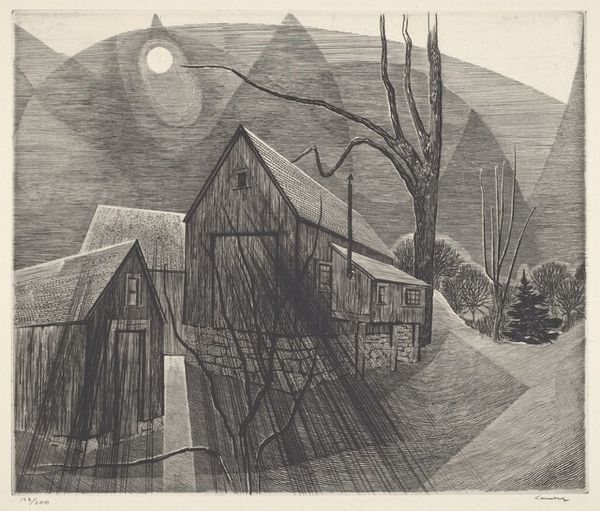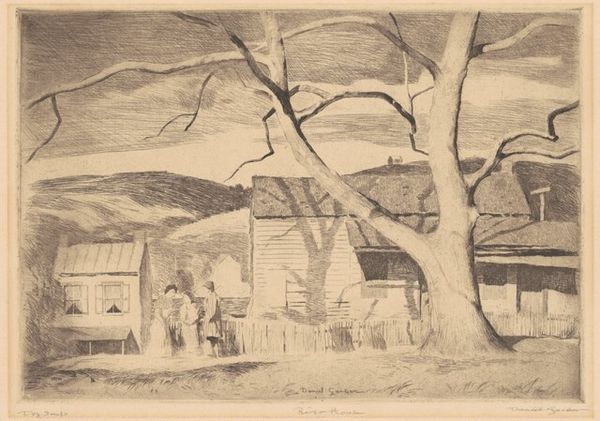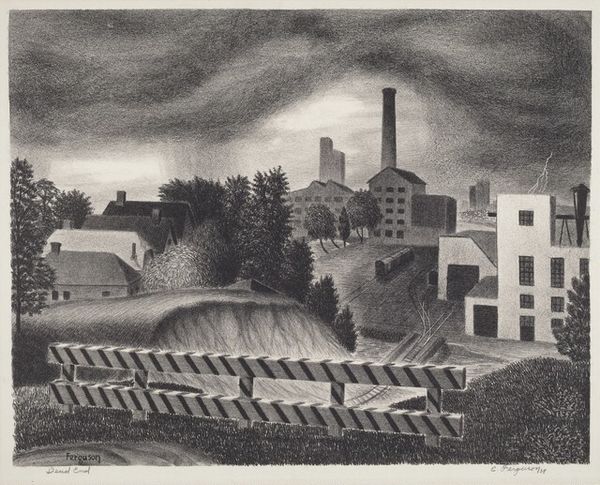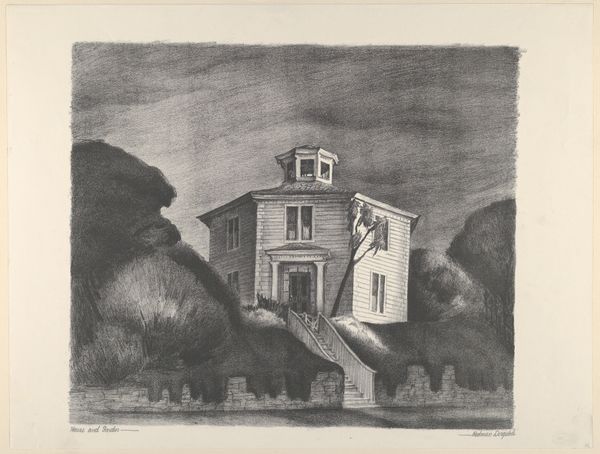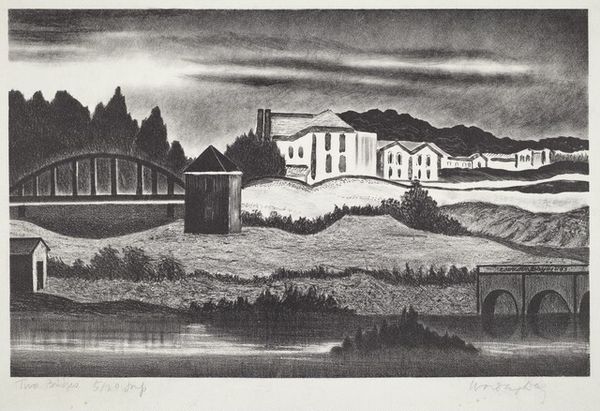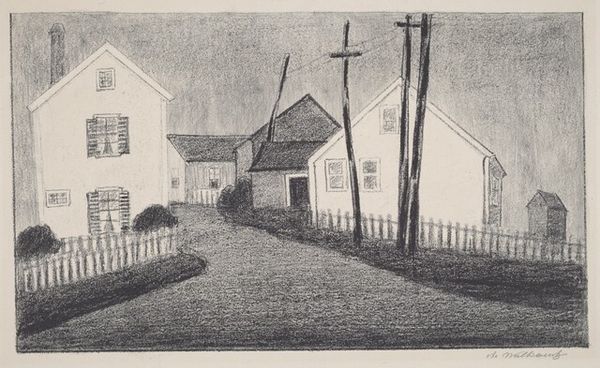
drawing, print, graphite
#
pencil drawn
#
drawing
# print
#
landscape
#
charcoal drawing
#
pencil drawing
#
graphite
#
cityscape
#
regionalism
Dimensions: image: 240 x 320 mm sheet: 330 x 480 mm
Copyright: National Gallery of Art: CC0 1.0
Curator: Okay, let’s dive into Theodore C. Polos’ "Dusk," a graphite and pencil drawing that dates back to 1940. Editor: It’s got this quiet melancholy. Like a memory fading at the edges. A gentle feeling but somewhat gray. Curator: Gray indeed! Polos really commits to that limited palette. The composition pulls your eye through the townscape, from the foreground cottages to the distant horizon line, the placement of buildings and trees seem pretty standard. Are these simply resources for rendering landscape or something more specific? Editor: Right. The social context of its making matters. Look at the utility poles marching across the scene; that is what really catches my attention because it disrupts an idealized pastoral. Polos uses graphite and pencil not merely for representation, but also as affordable, widely accessible tools that speaks to the period’s economic realities. This is what daily life looked like, maybe even a nod to how life has changed due to production. Curator: I agree there. It does ground the artwork into that historical and material reality. But beyond that, doesn't it suggest a story too? Dusk itself is so potent, not quite night, not quite day. It's suspended between possibilities, almost liminal in quality. You can almost sense the anxieties of the pre-war moment clinging to these houses. Editor: That feeling really permeates. There is a somber quietude. Curator: Precisely. You know, considering the simplicity of the medium, I'm impressed by how effectively Polos has captured that sense of stillness, that moment when the day's activities are winding down, but before the artificial lights of the buildings are actually lit, but waiting to be. There's an aura of anticipation and solitude blended together. Editor: Exactly! When looking at how "Dusk" renders humble homes as landscape in graphite it challenges our idea about labor, landscape, class, medium, and even domesticity. Curator: Yes, that’s perfectly said, and maybe is the heart of it. This isn’t a straightforward depiction. It invites us to slow down and dwell in that fading light a bit longer. Editor: It makes you appreciate how art comes to life through process, context, and really just an open mind to possibilities. Curator: Indeed!
Comments
No comments
Be the first to comment and join the conversation on the ultimate creative platform.

